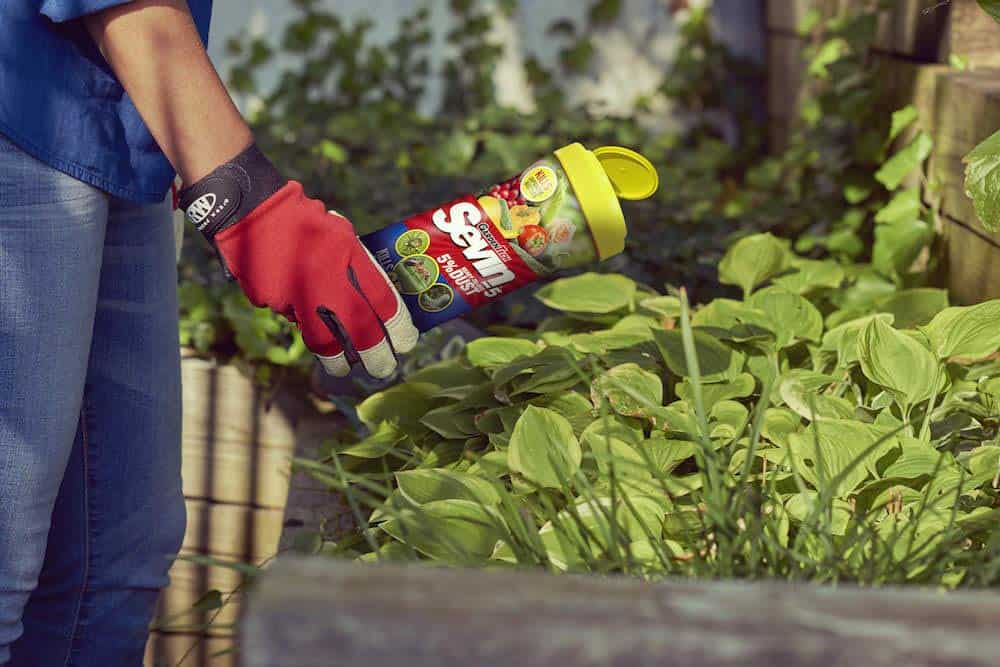In this article with the title will sevin dust kill squash bugs we will explain:
- The life cycle and habits of squash bugs.
- We will get acquainted with sevin dust.
- We also demonstrate to you how to apply this preparation and describe its effect on these insects.
We will do our best to answer the most frequently asked questions and conclude will sevin dust kill squash bugs.
All About Squash Bugs
The squash bug is the common name of several species of insects from the Coreidae family. The most famous representative is Anasa tristis. They are widespread throughout North America, even in southern Canada. They most often attack pumpkins and gourds, and the vector is bacterial diseases of the yellow vine. They are also known for the unpleasant smell they emit when they rot.
The complete life cycle of a squash bug lasts about six to eight weeks. They have a complete transformation that includes the egg stage, nymphs and adult form. In the northern climate they have one generation per year, while in warmer regions they can have up to three generations per year. This insect overwinters in an adult form, most often under the remains of crops, soil, stones, and the like.

The adult is about 1.5 cm (0.59 inch) long, dark gray, brown or black. Adults survive on average up to 130 days. The squash bug most often attacks zucchini and squashes we mentioned earlier. It also feeds on houseplants. The leaves wither, turn black and die. The amount of damage depends on the number of individuals present.
There are several natural enemies of the squash bug, mostly egg parasitoids. The most famous is from the order of Hemiptera and Diptera, which develop into an adult and kill it.
All About Sevin Dust
Sevin dust is a newer generation insecticide that protects plants through contact. Namely, this powder belongs to the group of neopyretroids whose mechanism of action is related to the neurological system of insects. Sevin dust in contact with insects causes them to die. This powder acts on over 65 different garden pests. It comes in a practical package that is ready to use and does not need to be diluted with water. Manufacturers guarantee that it decomposes gradually and is safe for the environment.
How To Apply Sevin Dust
Sevin dust, as the name suggests, comes in a powder formulation. The product comes ready to use and does not need to be diluted. It is necessary to inspect the plants in detail, notice which above-ground parts are squash bugs, and sprinkle this powder. The application is effortless and suitable for everyone.
To ensure the right effect, it should not rain for 48 hours after application to avoid washing the powder off from the plants. Also, the best application period is in the evening so that the agent would not disturb other insects such as our beneficial bees. This product has a minimal waiting period (the time required to pre-harvest the product) of only one day. Over time, Sevin dust has become a highly sought-after item in stores.
Will Sevin Dust Kill Squash Bugs?
If you read the instructions for using a product called sevin dust, you will see that they have indicated that it kills about 65 species of insects, including squash bugs. Namely, the answer to whether sevin dust kills squash bugs is yes, but it depends on many factors.
- We need to pay attention to the adequate application of insecticides on all aboveground parts where squash bugs are located.
- It is necessary to apply the product when we are sure there will be no rain in the next 48 hours.
- We need to notice this insecticide the first time we see squash bugs because this powder will not affect the eggs of this insect.
FAQ
Q: Does Sevin spray kill squash bug eggs?
A: Sevin dust, like most insecticides, cannot penetrate the eggshell, so it cannot kill the egg stage squash bugs. It is necessary to act earlier until the insects themselves have hatched eggs. Another way is to monitor the development of the egg and apply it after these insects hatch.
Q: When should I put Sevin dust on the garden?
A: Sevin dust is best applied immediately after the appearance of the first individuals. The reason for this is that Sevin dust does not act on the egg stage of this insect. The best period of application is dry weather without precipitation in the evening.
Q: Why Sevin dust is bad?
A: Problems with Sevin dust occur almost exclusively indoors. Namely, by its correction, this powder can cause poisonous gas that can be harmful to humans and animals in the immediate vicinity. Inhalation of sevin dust can cause dizziness, nausea, weakness, and similar symptoms. Therefore, sevin dust is applied exclusively in the open.
Q: How long does Sevin dust stay in soil?
A: The Sevin dust will remain on the plants and land for up to three months. This powder gradually evaporates from the application, so the initial concentration of this preparation will not be the same as after a month. Also, if it rains, this powder will be washed off the plant. According to this sevin dust is applied every seven to ten days.
Conclusion
After taking a brief look at the life cycle of pest squash bugs, we learned some new information about our enemies. In this article, we have also described all the necessary details on sevin dust, time, and application method. We tried to answer the most frequently asked questions related to this topic.
We hope we helped you and that you got the answer to the question will sevin dust kill squash bugs. Remember, only timely protection is the only reasonable protection.
